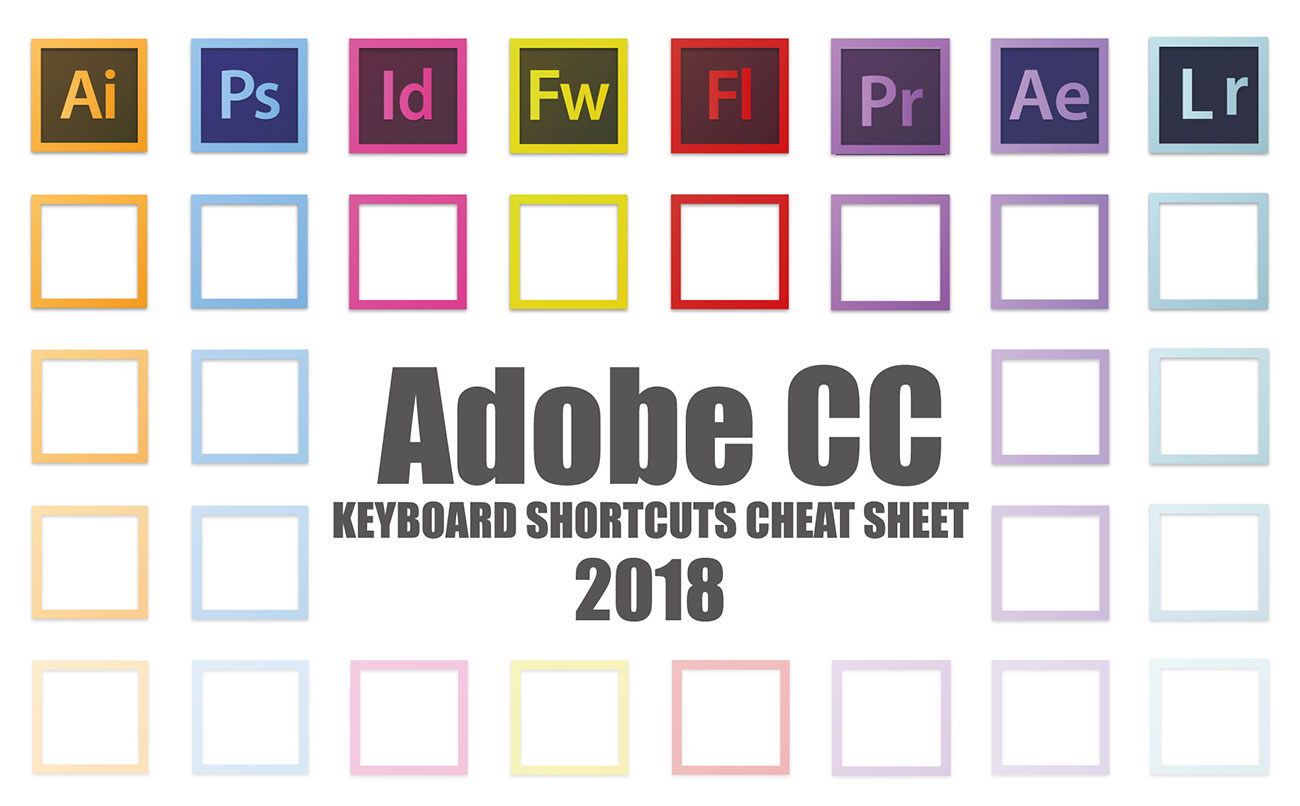
Keep hitting Shift+R, and you will cycle through all the instances of that frame in the sequence. When parked on a frame in the Source Monitor, Shift+R takes you to the first clip that frame appears in. The opposite is the Reverse Match Frame command. Park over any clip in the sequence and hit F to open the master clip in the Source Monitor at the exact same frame.ġ0.
#ADOBE PREMIERE KEYBOARD SHORTCUTS 2018 PRO#
Fun fact: Adobe engineers added these commands at the request of The Cool Stuff in Premiere Pro author Jarle Leirpoll.ĩ. This kind of trimming is called Top & Tail Editing, and is by far the fastest way to remove the unwanted parts of a clip. Just move the Playhead to where you want to ripple trim, hit Q or W, and the region between the Playhead and the previous or next edit will be ripple deleted away. Ripple Trim Previous Edit to Playhead ( Q) and Ripple Trim Next Edit to Playhead ( W) are indispensable for doing rough cuts. Add the Shift modifier key, and you cut all clips under the Playhead in two.Ĩ.

It’s like using the Razor Tool, only faster. Hitting Ctrl+K ( Cmd+K) cuts the clip in two. To Deselect All clips, effects or whatever is selected, hit Shift+Ctrl+A ( Shift+Cmd+A on Mac).ħ. D is the keyboard shortcut for Select Clip at Playhead. X will mark the clip under the Playhead, but the / (forward slash) key will set In and Outs around all the clips you currently have selected.ĥ.

You can clear In and Out points with Ctrl+Shift+I ( Opt+I), Ctrl+Shift+O ( Opt+O), and Ctrl+Shift+X ( Opt+X) for both.Ĥ. Setting In and Out points with I and O is common. Much faster than messing with the scroll bar.ģ. The backslash key ( \) will zoom your sequence to show everything in the timeline. Ctrl+=/ - ( Cmd+=/ -) handles only video track height, and Alt+=/ - ( Opt+=/ -) only audio track height.Ģ. To expand and minimize your timeline tracks, use Shift+=/. Go to the File menu (or Premiere Pro CC menu on Mac) and choose Keyboard Shortcuts > Keyboard Layout Preset > Adobe Premiere Pro Default if it isn’t already selected.ġ. Here are 10 default shortcuts that you should know, and 10 shortcuts that are worth mapping, from our editor’s resource book The Cool Stuff in Premiere Pro. Adobe Premiere Pro also has hundreds of commands that aren’t mapped by default, so spending a few minutes in the Keyboard Shortcuts window to map your custom layout can turn more of your editing time into creative time. But video editors know that using shortcuts for repeated actions like playing footage, setting in and out points, inserting, and trimming, are vital to getting that cut done on deadline. (Okay, it's not nonsense, but I'm lazy and have dainty hands.Most applications have keyboard shortcuts to save you mouse clicks. Plus, they're super easy to use and remember-none of these key combo nonsense. While all of these keyboard shortcuts are helpful, the left and right arrows are a friggin' godsend when you're trying to do some really fine edits that require expert precision. Shift+Down Arrow: Extend selection down (moves playhead to previous edit on any track).Shift+Up Arrow: Extend selection up (moves playhead to next edit on any track).


If you're an editor who already knows and uses the J, K, and L keys, there are more advanced shortcuts that will let you navigate your timeline in a more precise way. More Advanced Shortcuts for Navigating Your Timeline (However, if you like the whole linear setup, you might be into it.) Also, you can increase the speed of playback by tapping the corresponding key multiple times-the more you tap, the faster it goes. You can start and stop playback with it, while K just stops playback. Here's a quick explanation of the keyboard shortcuts Ramelan talks about in the video:Ī couple of things to think about: the space bar is better than the K key, I'm just saying.


 0 kommentar(er)
0 kommentar(er)
